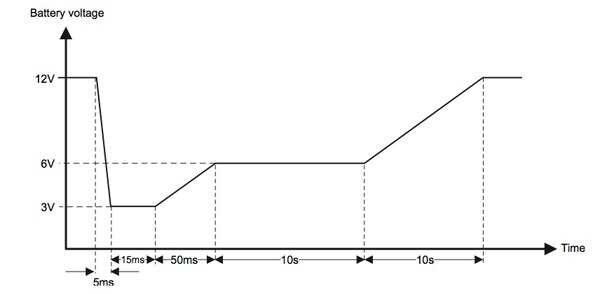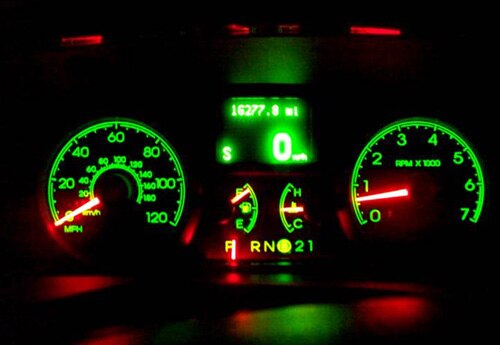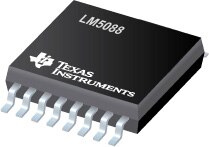Automotive Applications Test a Power Chip’s Mettle
投稿人:电子产品
2014-04-29
Automotive manufacturers have long taken advantage of electronics to enhance their vehicles. Analyst Databeans reports that semiconductor content in vehicles has been growing at double-digit rates in recent years and has now reached roughly $350 per vehicle.
The increase of the electronic content comes despite the fact that a modern vehicle is a challenging environment for silicon. Moreover, in addition to the heat, vibration, and grime of normal operation, drivers expect a vehicle’s engine management unit and lighting to spring to life even as the vehicle’s electrical power source struggles with the demands of starting an internal combustion engine (“cold cranking”). That is in addition to any safety systems powered by the battery that the driver takes for granted, but must be ready to work the instant an ignition key is turned or start button is pressed.
The problem is multiplied in cold temperatures due to factors such as increased internal battery resistance and additional cranking load from the engine’s viscous lubricant. Worse yet, many modern vehicles require more frequent cold cranking than older types because their engines are automatically stopped as an economy measure every time the car comes to a halt.
This article explores the demands placed upon the electronics during cold cranking and takes a look at how some major silicon vendors have addressed the challenge with their latest products.
The demands of cold cranking
The standard power supply in a conventional vehicle is typically a lead-acid-type battery which is constructed from six 2.1 V galvanic cells in series providing a nominal 12 V (actually 12.6 V). In normal operation, the vehicle’s battery voltage typically varies between 9 and 16 V.¹
The variation in voltage is even greater during cold cranking. Cold cranking describes the action of starting the vehicle’s engine from cold conditions (or at least at a temperature lower than normal operating conditions). During cold cranking, the battery is the only source of power to spin the starter motor, which in turn rotates the engine against cylinder compression, friction, and the drag of viscous lubricant. The engine needs to attain between 80 and 200 rpm before it will fire.
Cold-cranking amperes (CCA) defines the current a battery can provide at 0°F (−18°C). The rating is specified as the current a lead-acid battery at that temperature can deliver for 30 seconds while maintaining at least 1.2 V per cell (7.2 V for a 12 V battery). Typical values for new, fully-charged lead-acid batteries are in the range of 400 to 500 A. The CCA of a battery varies depending on factors such as state of charge, age, and the number of recharge cycles to which it has been subjected.
No conventional automotive battery can instantly perform to its rated CCA. Things take a few moments to warm up. Figure 1 illustrates a typical battery profile under cold cranking.

Within a few milliseconds, the battery voltage can drop down to around 3 V and remain there for perhaps 15 ms. Recovery to 6 V is quite quick, but it can then take up to 20 seconds more for the voltage to rise to the nominal output.²
Traditionally, the lead-acid battery powered the starting, lighting, and ignition (SLI) systems of the vehicle (the device is sometimes referred to as an “SLI” battery). Once the engine was ticking over, the alternator supplied between 13.8 and 14.4 V to power the other vehicle systems and trickle charge the battery.
However, contemporary vehicles increasingly rely on the battery to provide power for items such as navigation systems, entertainment screens, and dashboards even when the engine has stopped (Figure 2). Vehicle occupants then expect these systems to continue operating during cold cranking, particularly in autos whose engines are automatically stopped as an economy measure during city driving and are then restarted when the driver presses the accelerator pedal.

Making the automotive grade
Semiconductors used in vehicles, particularly power chips such as DC/DC voltage converters (“regulators”), must be designed to tolerate the wide voltage input variances typical of cold cranking, as well as being subject to extreme temperature ranges, vibration, and dirt. Fortunately, major silicon vendors, aware of large volume orders that the automotive industry can generate, supply a range of products targeted specifically at this market.
Many of these products comply with AEC-Q100, a set of reliability stress tests defined by the Automotive Electronics Council for the purpose of qualifying ICs for automotive applications.
Products are rated from Grade 4 to Grade 0 in four categories: mechanical stress (thermal and pressure testing), voltage bias stress, whisker growth evaluation, and power cycling.
Some manufacturers, for example Linear Technology, conduct additional device- and package-level stress tests. The company says it also subjects its automotive grade components to liquid-to-liquid thermal shock, instant solder shock, and 100 percent oxide stress tests.³
Among the components offered by Linear Technology is the LT3507, a triple-channel buck voltage regulator packaged in a 38-lead, 5 x 7 mm QFN package. One channel is capable of delivering up to 2.4 A of output current while the other two can deliver 1.5 A. The company says the device’s wide input range of 4 to 36 V makes it ideal for regulating power from a wide variety of sources, including automotive batteries. In a vehicle application, the company says the LT3507’s minimum input voltage of 4 V enables it to operate during cold-crank conditions.
Texas Instruments (TI) offers a large family of automotive-grade power chips. Typical of the company’s range is the LM5088 (Figure 3). This device is a nonsynchronous, step-down (“buck”) switching voltage regulator. The company says the device is an automotive-grade product that is AEC-Q100 Grade 1 Qualified and features a –40° to +125°C operating junction temperature.

The LM5088 features an input voltage range spanning 4.5 to 75 V and can supply 8.3 to 13 V. The company says the use of an emulated control ramp reduces noise sensitivity of the pulse width modulation (PWM) circuit, allowing reliable control of very small duty cycles necessary in high-input/low-output voltage applications. The LM5088 switching frequency is programmable from 50 kHz to 1 MHz. By using a bridge rectifier and high-value aluminum electrolytic capacitors at the input, continuous operation is assured during the short period in the cold-cranking operation when the input voltage drops below 4.5 V.
Similarly, STMicroelectronics offers a range of AEC-Q100-Qualified components in its “Q Automotive” series. The A5973D is a switching regulator with a minimum switch current limit of 2.25 A so it can deliver up to 2 ADC to the load depending on the application conditions. The output voltage can be set from 1.235 to 35 V. An internal oscillator fixes the switching frequency at 250 kHz. The company says that with a minimum input voltage of 4 V (maximum 36 V), the A5973D is suitable for automotive applications requiring operation even during cold cranking.
Low input-voltage tolerant
The unique operating conditions of a modern vehicle present a challenging environment for the increasing volume of silicon. Voltage variation, especially under cold cranking, was a particularly tough problem for sensitive chips.
Major manufacturers of switching voltage converters have eased the problem by introducing a range of power chips that are able to regulate a supply within specification across a wide range of input voltages. In particular, these devices are able to continue satisfactory operation even at the low-input voltage supplied by a lead-acid battery coping with the strain of starting a cold engine.
For more information on the parts discussed in this article, use the links provided to access product information pages on the DigiKey website.
References:
- Automotive battery performance.
- “Load Dump and Cranking Protection for Automotive Backlight LED Power Supply,” Texas Instruments, Application Report SNVA681, January 2013.
- “Linear Technology Corporation Reliability Test Criteria For Automotive Grade Products.”
免责声明:各个作者和/或论坛参与者在本网站发表的观点、看法和意见不代表 DigiKey 的观点、看法和意见,也不代表 DigiKey 官方政策。








 中国
中国